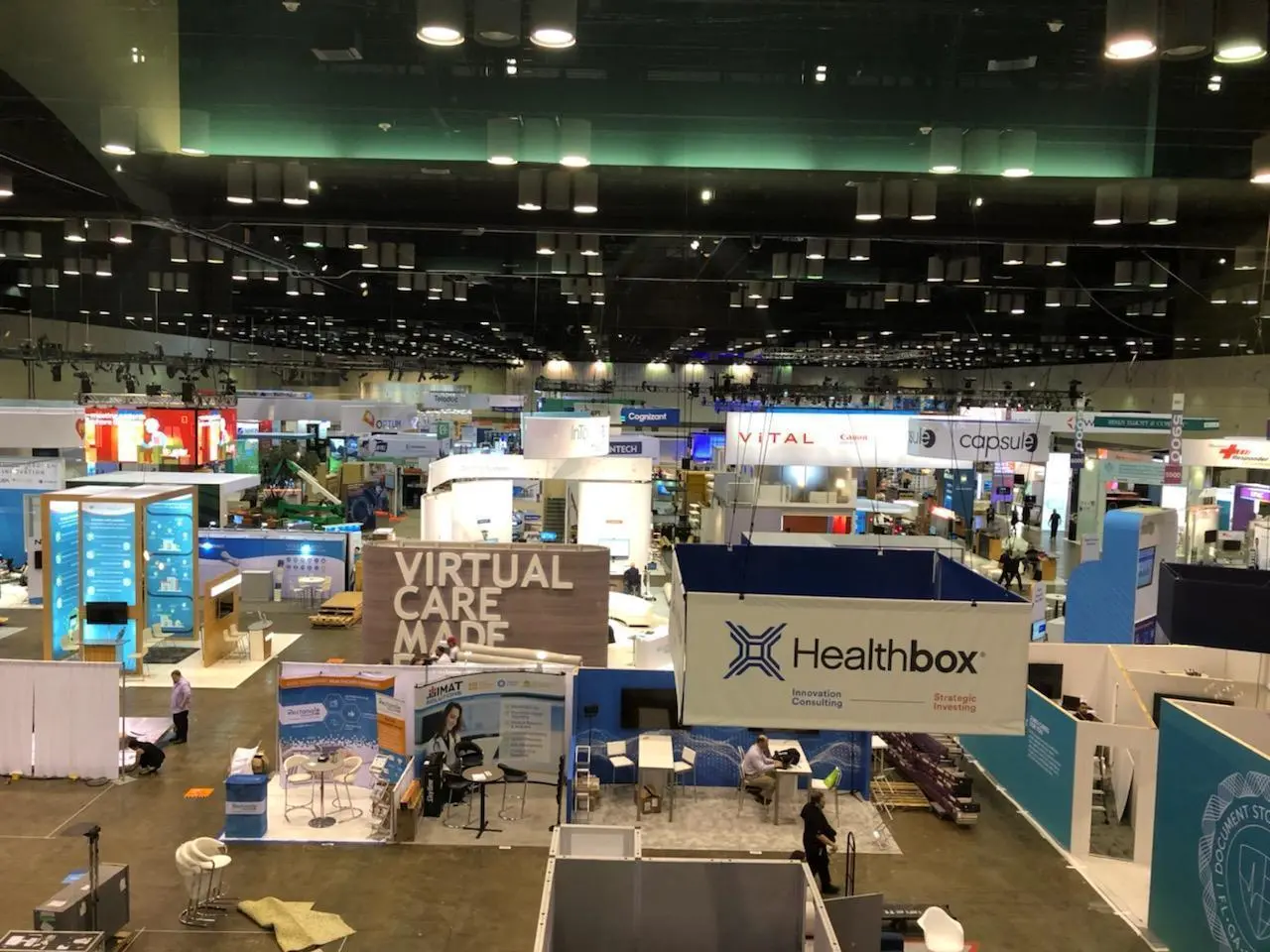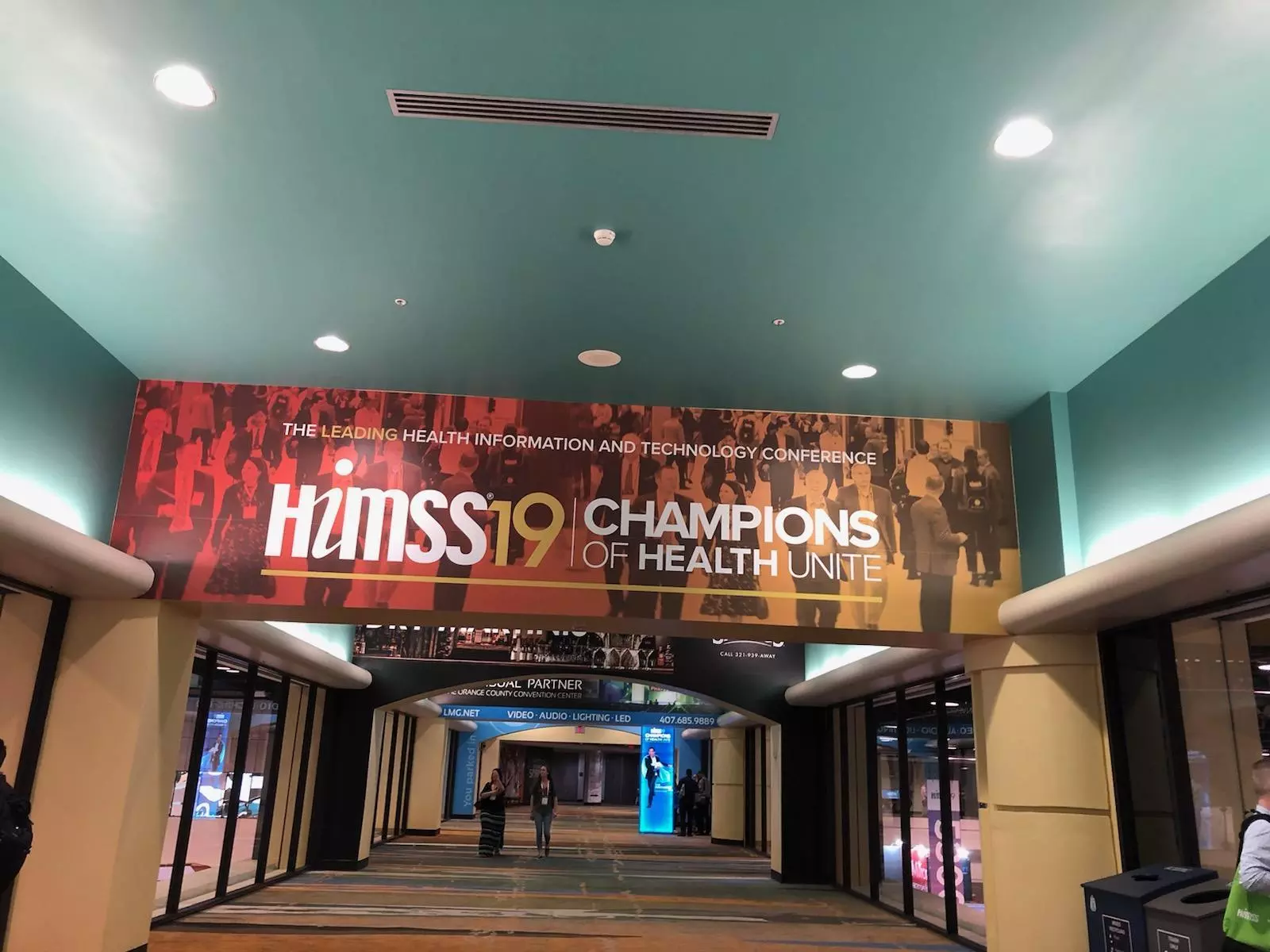Comments (3)
Brittney Townsend
It seems like you are having a great time covering HIMSS.
Sophie Higginson
Thank you Karen for the info
Marty Pritchard
So many acronyms to remember


When I left DC this morning, an icy rain was falling. By way of contrast, Orlando, FL, where the HIMSS conference is being held, is muggy and hot. Although I much prefer cold weather generally, the conference is housed in a massive conference center – as in massive. So, I am indoors in an air-conditioned place that actually could be anywhere. That’s not unique for conferences in general although other events pale in size. There are over 40,000 attendees in attendance. More on that later.

This afternoon, I attended a session sponsored by the National Health IT Collaborative for the Underserved (NHIT). The focus of the daylong pre-conference session (I could only attend a part of it) was on the needed technology infrastructure for delivering quality health outcomes for those patients who are rural and/or underserved.
Before I launch into the substance, let me just observe that there are so many acronyms here that one needs a dictionary, and I was constantly referring to the Internet for help. Even the conference organizer has an acronym – HIMSS (Health Information Management Systems Society). But during the presentations, there were many more abbreviations of names and systems and technologies. Try these out for fun: ONC; CMS; HRSA; CHCs; PDMP and the list continues.
In a nutshell, the challenges NHIT seeks to address are vast, both in terms of technology and providing care for the designated patient population. We desperately want to be able to say that technology is the way (a way?) for solving the inequities and disparities in healthcare delivery – in the US, in disasters, across the globe. We lament: If we only had electronic health records, telehealth and other innovative technologies, we could ameliorate a host of healthcare problems.
What the attended program demonstrated is that the mere presence of technology – of whatever sort – is not the be-all-end-all solution. Here are a few reasons why.
For starters, there needs to be data collection by the locations delivering healthcare; many of these locations are short-staffed to start with and are focused, for good reason, on their patients’ immediate needs. Next, whatever data are collected have to be interoperable with other databases around the nation (globe), which are aggregating the data. And then, even assuming all the data can be amassed, they need to be analyzed, understood and then applied.
There are other considerable hurdles too. The technology has to be usable and medical professionals need to be trained to use the newest technology (and they need the time to learn with oversight by other trained professionals). The technology needs to be secure, and we need to be clear on who owns the information collected. Then, assuming there are technologies and Internet and cybersecurity, there needs to be some economic support for the clinical providers who may not be able to afford the advanced (or even non-advanced) technology. And, to make economic matters worse, it appears that even when resources are available to healthcare professionals working in the trenches, including funds from the Federal government, the news of the funding does not get to the healthcare users. So, these organizations/individuals may not even apply for the dollars that are available. And, even if they get the monies, there is no assurance that it will be applied in the most effective and efficient way.
Yipes and a reality check for the whole conference (and more generally). Technology – standing alone and howsoever creative, innovative and beneficial – is not enough. We need for technology to interface with other technologies and we need to know how to use it and what it generates. These are real challenges that force us to pause before we say glibly, “Oh, technology can solve that problem.”
I plan to keep that thought in mind as the conference launches. And, I hope to keep asking: Who will pay for the technology? How will it affect patients? How will folks get trained to use it? Who owns the data? How secure are the systems?
The issues we face caring for underserved populations extend far beyond technology. For starters, many individuals who have not received care regularly, have been in pain for extended periods. That’s why it is so hard to address their pain.
In this context, dentistry was mentioned. If someone has needed but had done without six root canals for years, the level of his/her pain is extraordinary. And, ordinary over the counter painkillers may not be enough. The gateway to opiates opens.
Then, we have regulations that are in force in various states that are not coordinated or synchronized. Consider the need to monitor prescription drug use among individuals who are doctor shopping. Suppose the due date for reporting is short in some locations (a day) or longer in other (days). This means there can be notable gaps in reporting, and patients who want to abuse the system or are desperate for pain relief, become aware of these gaps and inconsistencies.
Then, there are trust issues and key social determinants of health that effect outcomes. These are things that, while critically important to wellness, are not solved by technology.
Tomorrow begins with the opening keynote titled: Will Consumer-Directed Exchange Disrupt the Healthcare Marketplace? Panelists include Aneesh Chopra and Karen DeSalvo.
To be candid, I am eager to attend because I don’t fully understand the question the panel is addressing, let alone the answers. For example, isn’t the health marketplace already fragmented and disrupted? Hasn’t there been consolidation, shrinking the marketplace? And, what consumers are we referring to as participants in the Exchange? Current consumers? Prospective consumers? Vulnerable populations? What about children? The moderator is Hal Wolf, the President and CEO of HIMSS; I’m hoping he can not only moderate but also answer and direct answers to the posited question.
Later, I will be attending a session titled, How Consumer Technology is Revolutionizing Our Daily Lives. Hal Wolf referenced above will ask questions of Gary Shapiro’s newest book, Ninja Future. Shapiro, the President and CEO of the Consumer Technology Association, has written extensively on technology and how we can keep pace with its rapid growth. Apparently, the book provides concrete strategies for both employers and employees trying to be prepared for the future.
Both of these sessions interest me from a different lens, as did the presentations early today. How can we prepare our students – all of our students – for the future they face? How can educational institutions ready themselves for the future? And, importantly, if technology is advancing so so rapidly, how will it be distributed to insure that we do not have technology only for those who can afford it and understand it? How can we make sure that our future advances benefit all?
I leave today with a memory of classrooms where technology sits in boxes in the back of classrooms or used with many glitches and not up to its potential. There is a need for technology to be sure and it can be enriching – in healthcare and education. But, the innovators need to do vastly more than create technology. That is just the starting point.
And, with that, the conference opening reception is starting. More tomorrow.
It seems like you are having a great time covering HIMSS.
Thank you Karen for the info
So many acronyms to remember ![]()
Karen is an educator and an author. Prior to becoming a college president, she was a tenured law professor for two plus decades. Her academic areas of expertise include trauma, toxic stress, consumer finance, overindebtedness and asset building in low income communities. She currently serves as Senior Counsel at Finn Partners Company. From 2011 to 2013, She served (part and full time) as Senior Policy Advisor to the US Department of Education in Washington, DC. She was the Department's representative on the interagency task force charged with redesigning the transition assistance program for returning service members and their families. From 2006 to 2014, she was President of Southern Vermont College, a small, private, affordable, four-year college located in Bennington, VT. In Spring 2016, she was a visiting faculty member at Bennington College in VT. She also teaches part-time st Molly Stark Elementary School, also in Vt. She is also an Affiliate of the Penn Center for MSIs. She is the author of adult and children’s books, the most recent of which are titled Breakaway Learners (adult) and Lucy’s Dragon Quest. Karen holds a bachelor degree in English and Spanish from Smith College and Juris Doctor degree (JD) in Law from Temple University - James E. Beasley School of Law.
Leave your comments
Post comment as a guest